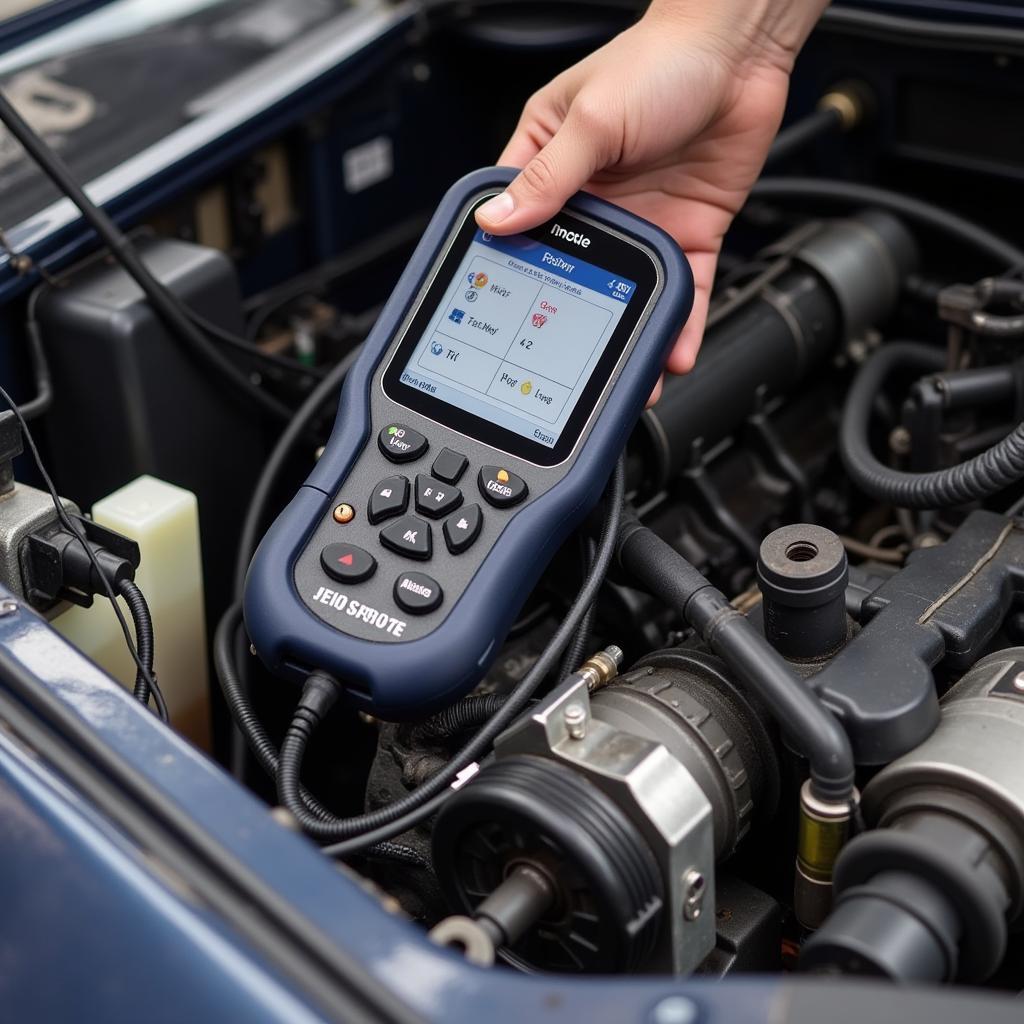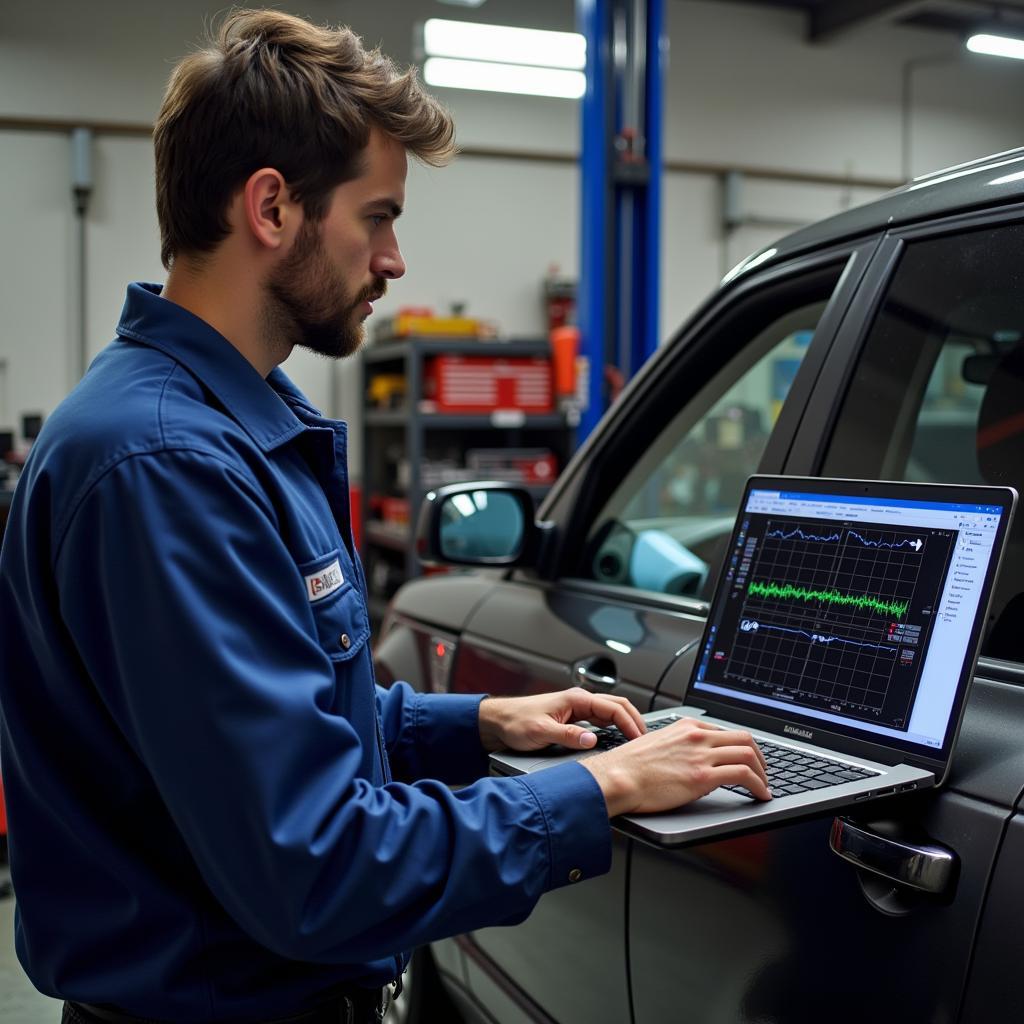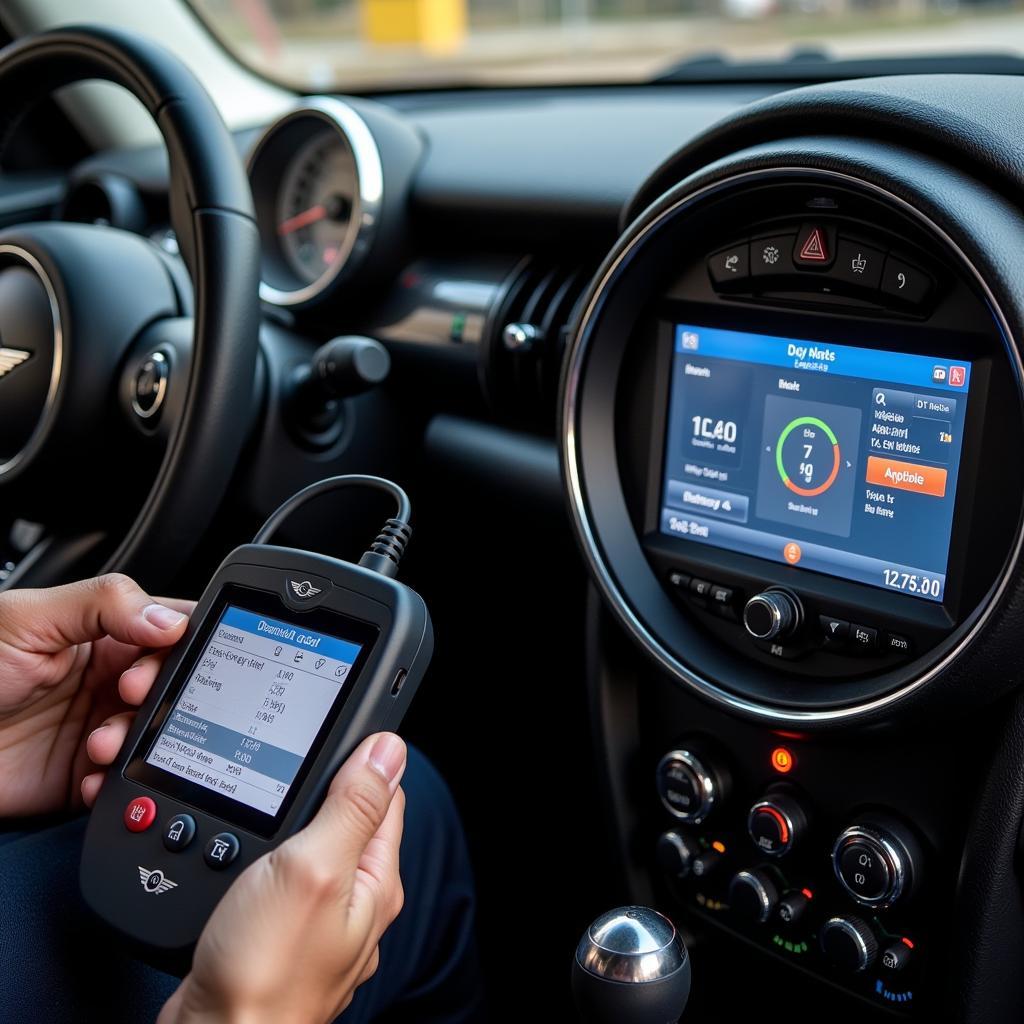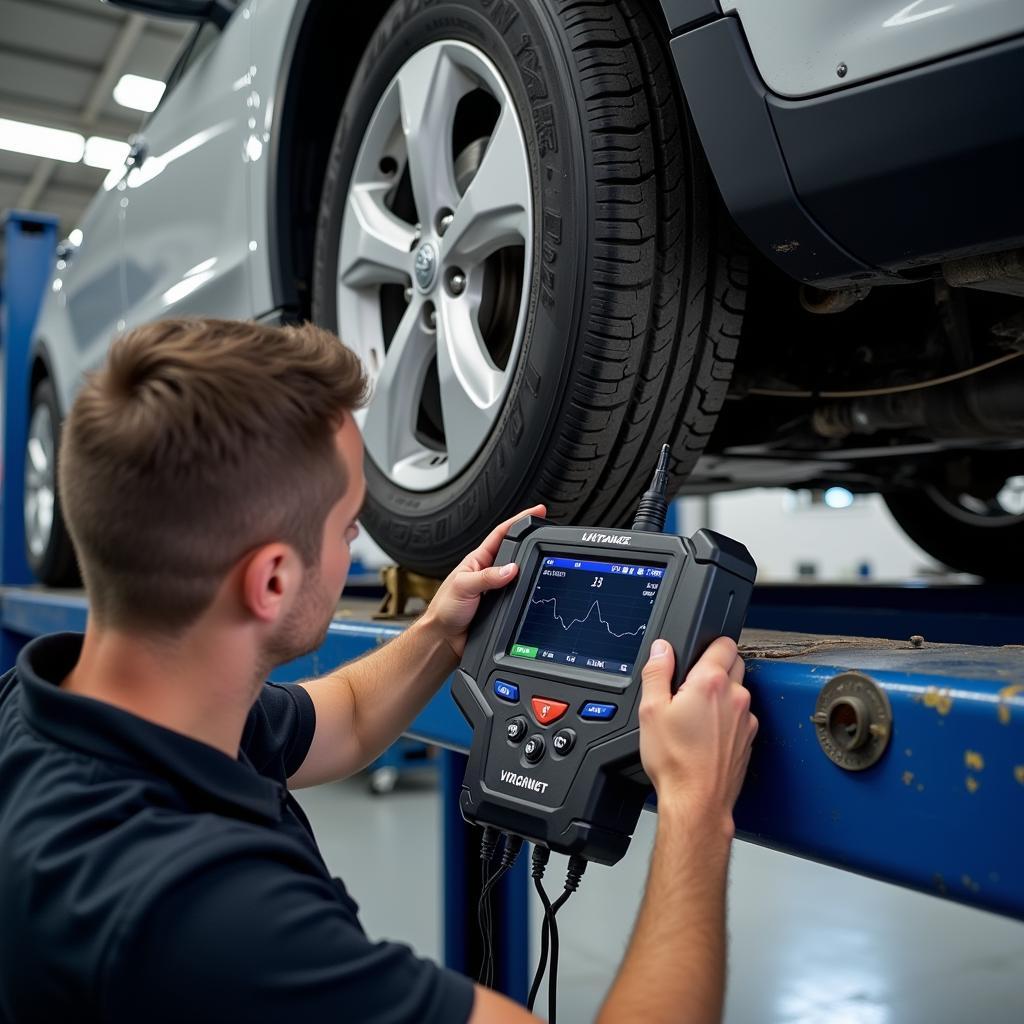In the world of automotive repair and maintenance, having the right tools for the job can make all the difference. This is especially true when it comes to diagnosing engine problems. Gone are the days of relying solely on experience and intuition to pinpoint the source of a check engine light. Today, engine diagnostic tool can obd2 codes empower car owners and mechanics alike with the ability to read and interpret the complex data stream flowing through a vehicle’s onboard computer. But with so many options on the market, how do you choose the best engine diagnostic tool for your needs? This comprehensive guide will delve into the intricacies of engine diagnostic tools, providing you with the knowledge to make an informed decision.
 Types of Engine Diagnostic Tools
Types of Engine Diagnostic Tools
Understanding Engine Diagnostic Tools
Engine diagnostic tools, also known as OBD2 scanners or code readers, are essential tools for anyone who owns, repairs, or maintains vehicles. They provide a window into the inner workings of a vehicle’s engine and other critical systems by communicating with the onboard computer, also known as the Engine Control Unit (ECU). The ECU constantly monitors various sensors throughout the vehicle, collecting data on everything from engine speed and temperature to fuel pressure and emissions. When the ECU detects a problem, it generates a Diagnostic Trouble Code (DTC) and stores it in its memory. This is where an engine diagnostic tool comes in handy. By connecting to the vehicle’s OBD-II port, typically located under the dashboard on the driver’s side, these tools can read and display these stored codes, providing valuable insights into the potential root cause of the problem.
Types of Engine Diagnostic Tools
The market is flooded with a wide range of engine diagnostic tools, each tailored to different levels of expertise and budgetary constraints. Understanding the distinctions between these types is crucial for selecting the right one for your specific needs.
1. Basic Code Readers
As the name suggests, basic code readers are entry-level devices primarily designed to read and clear basic OBD2 codes. They are generally the most affordable option, making them popular among car owners who prefer to perform simple diagnostics and troubleshooting themselves. However, their functionality is limited to generic OBD2 codes and they may not provide access to manufacturer-specific codes or advanced features.
2. Mid-Range Scanners
Stepping up from basic code readers, mid-range scanners offer a more comprehensive set of features. They can read both generic and manufacturer-specific codes, providing a deeper level of diagnostic information. Additionally, they may include features like live data streaming, which allows you to view real-time sensor readings, and some basic programming functions. These scanners are suitable for DIY enthusiasts and small workshops that require more advanced diagnostics capabilities.
3. Professional-Grade Scan Tools
For professional mechanics and automotive technicians, professional-grade scan tools are indispensable. These sophisticated devices offer a full suite of diagnostic and programming functions, including access to all system modules, bi-directional control, and advanced coding capabilities. They typically come with large, high-resolution displays, user-friendly interfaces, and regular software updates to keep up with the latest vehicle models and technologies.
Key Features to Consider
With countless options available, narrowing down your choices based on specific features is essential.
1. Vehicle Compatibility
Not all engine diagnostic tools are compatible with all vehicle makes and models. Some tools specialize in specific manufacturers, while others offer broader coverage. Ensure the tool you choose supports the vehicles you intend to diagnose.
2. Code Reading and Clearing
The primary function of any engine diagnostic tool is to read and clear DTCs. Look for a tool that can read both generic and manufacturer-specific codes for a complete diagnosis.
3. Live Data Streaming
Live data streaming is an invaluable feature that allows you to view real-time sensor data, such as engine RPM, coolant temperature, and oxygen sensor readings. This feature is crucial for monitoring sensor performance and identifying intermittent problems.
4. Bi-Directional Control
Bi-directional control, also known as active testing, allows you to command specific components to activate, such as turning on the fuel pump or cycling the EVAP system. This feature is particularly helpful for confirming component functionality and verifying repairs.
5. Programming and Coding
For advanced users, programming and coding capabilities are essential. These features allow you to perform tasks like key fob programming, injector coding, and module reprogramming.
Expert Insights
“Investing in a quality engine diagnostic tool is crucial for any serious DIYer or automotive professional,” says John Smith, a seasoned automotive engineer with over 20 years of experience. “The ability to accurately diagnose engine problems not only saves time and money but also ensures the vehicle is running at peak performance.”
The Importance of Accurate Diagnostics
Accurate engine diagnostics are paramount for effective vehicle repair and maintenance. By identifying the root cause of a problem, you can avoid unnecessary repairs and ensure the right components are replaced or serviced. This not only saves you money in the long run but also prevents further damage to your vehicle.
Conclusion
Choosing the right engine diagnostic tool can be a daunting task, given the vast array of options available. By understanding the different types of tools, considering key features, and setting a budget, you can make an informed decision that meets your specific needs. Whether you’re a car enthusiast looking to delve into DIY repairs or a seasoned mechanic, investing in a quality fuel injection diagnostic tool fidt can be a game-changer for diagnosing and resolving engine problems effectively. For personalized assistance in selecting the perfect engine diagnostic tool, feel free to contact the experts at ScanToolUS at +1 (641) 206-8880 or visit our office at 1615 S Laramie Ave, Cicero, IL 60804, USA.



